Art&Ideas
10 April 2017
I suppose much of urban art has a role of sharing openly and publicly social and political statements through art. Sometimes tributes to “heros”, it comes to my mind the famous Che Guevara’s face in a Ministry’s building in Cuba.
In Portugal there’s a nice mural tribute to one of the capitans of the Revolution of 1974 that was painted at the New University of Lisbon – Salgueiro Maia mural.
Many political parties’ murals were painted during the revolutionary times in Portugal, one that resisted for many years was by the extinct Movement of Socialist Left
The Mexican muralists painted powerful murals:
Siqueiros mexican revolution of Zapata and Pancho Villa
Rivera’s tribute to the working class in Detroit Murals – https://youtu.be/qyLHcwBH6PI
Orozco Dive Bomber and Tank – https://youtu.be/ESO-EMKJwmg
Public Art Tours in Lisbon – https://www.noticiasaominuto.com/cultura/360555/visitas-guiadas-a-murais-de-arte-urbana-comecam-sabado
Nice examples of Street art – https://brightside.me/article/the-20-most-stunning-works-of-street-art-of-2015-24705/
5 April 2017
Course resources on Art&Society
MoMA publications: books
★ Paola Antonelli, Jamer Hunt, and Michelle Fisher (eds.), “Million Dollar Blocks,” in Design and Violence. The Museum of Modern Art, 2015. Purchase the full publication at MoMAstore.org.
Deborah Cullen on Felix Gonzalez-Torres’s Untitled (Perfect Lovers) in MoMA at El Museo, 2004. Excerpted in John Elderfield, Ed. Modern Painting and Sculpture: 1880-The Present. The Museum of Modern Art, 2004, 458. Purchase the full publication at MoMAstore.org.
Leah Dickerman, Jacob Lawrence: The Migration Series. The Museum of Modern Art, 2015. Purchase the full publication at MoMAstore.org.
★ Carolyn Lanchner, Jasper Johns. The Museum of Modern Art, 2009. Purchase the full publication at MoMAstore.org.
Jacob Lawrence, The Great Migration, 1992. Excerpted in John Elderfield, (ed.), Modern Painting and Sculpture: 1880-The Present. The Museum of Modern Art, 2004, 216-217. Purchase the full publication at MoMAstore.org.
Deborah Wye, Kirchner and the Berlin Street. The Museum of Modern Art, 2008. Purchase the full publication at MoMAstore.org.
MoMA publications: articles and online resources
Design and Violence, The Museum of Modern Art
MoMA Learning: Photography as Witness
MoMA Learning: The Photographic Record
One-Way Ticket: Jacob Lawrence, The Museum of Modern Art
Shahzia Sikander: Gods, Griffins and Cowboy Boots, The Museum of Modern Art
Additional reading: articles and online resources
Ross Bleckner, “Felix Gonzalez-Torres,” BOMB magazine, Spring 1995.
Martha Rosler, “Cut and Paste,” New York Times, September 5, 2008.
More about the artists
Felix Gonzalez-Torres on MoMA.org
Shahzia Sikander on MoMA.org and Art21
Spatial Information Design Lab on MoMA.org
Ernst Ludwig Kirchner on MoMA.org
Kerry James Marshall on MoMA.org and Art21
30 March 2017
Art and Sociey is the last theme of the course.
«Many artists create work in response to the social, cultural, and political issues of their time…The introduction video is the place to begin. It focuses on three works of art—an iconic Depression-era photograph by Dorothea Lange; Martha Rosler’s photomontage protest against the Vietnam War; and Felix Gonzalez-Torres’s expression of love and loss through two wall clocks…from Michael Rakowitz’s parasitical and custom-designed homeless shelters to Kerry James Marshall’s quiet painting of a black police officer that encapsulates the complexities of race and policing in 21st-century America»
26 March 2017
The field of technology and art is fascinating and as the media becomes more accessible and affordable, new artists emerge.
In this week the name and work of Jessica Rosenkrantz is presented and I’ve looked for more information in the Internet and watched this conference on her generative design, taking inspiration from nature and its patterns and using programming and 3D printing the products are customized and individualized.
Generative Art reflects in visual and music works – https://youtu.be/x0OK1GiI83s . CGI has developed into very sophisticated effects in film.
Interactive art is another interesting approach and great installations have been produced:
Interactive art with wooden mirrors
Shrumen Lumen interactive art installation
25 March 2017
Bic ballpen was invented in the 50’s and still resists in the market. I recall the fountain pen and the mess with the ink. This is a good example of good design and good function.
By the same time Gilette invented the double side razor blade which persisted till the present and became a popular everyday object with a safety function.
There are many useful instruments with great conception and design.
The combination of crafts and arts reached a high standard with Bauhaus – http://www.bauhaus.de/de/ , the german school devoted to design and art with the function feature, an avant-garde school which prospered from 1919 to 1933, till the rise of nazism. Founded by an architect Walter Gropius, Bauhaus nurtured modernism with a function purpose.
Bauhaus had a profound influence upon subsequent developments in art, architecture, graphic design, interior design, industrial design, and typography (https://en.wikipedia.org/wiki/Bauhaus )
It’s amazing how modern it looks Wassily chair designed by Marcel Breuer in the 20’s. Famous names of archietcts and artists are associated with Bauhaus, such as Mies van der Rohe, Kandinsky, Josef Albers, Paul Klee, Moholy-Nagy, and many others who went to exile during nazism.

24 March 2017
Cornelia Parker is a contemporary british sculptor and artist (of Tchechen birth) who also works with found objects and his installation of 1991 Exploded Shed is her iconic work, though she is very ecletic and has very diverse works as seen in this collage:

Her last work Magna Carta is a commission for the British Library to commemorate Magna Carta and it is a collective embroidery made by 200 people invited to hand-stitch portions of the work including prison inmates, civil rights campaigners, MPs, lawyers, barons and artists, including Julian Assange and Edward Snowdan – https://en.wikipedia.org/wiki/Magna_Carta_(An_Embroidery)
23 March 2017
Very creative forms of Art can be found nowadays using recycled materials, like south african Mbongeni Buthelezi who paints with plastic rubish and hot gun
or the amazing Tire Sculptures by Blake Mcfarland – http://www.blakemcfarland.com/
Art at the Dump: From Trash to Treasure
Another Creative junk artist is Leo Sewell with his intricate metal work
– http://www.leosewell.net/index.php
The art of Assemblage (Sotheby TV)
22 March 2017
In line with Duchamp’s readymades is provocative italian artist Piero Manzoni of Arte Povera and his can Artist’s shit (1961) – http://www.theartstory.org/movement-arte-povera-artworks.htm#pnt_3
Other italian artists in the 60’s and 70’s are protagonists in this movement using poor materials.
21 March 2017
In further readings other contemporary artists are analysed and some are new to me.
I enjoyed particularly the works of Ghana artist El Anatsui – http://el-anatsui.com/ , with wood, clay, metal, and the discarded metal caps of liquor bottles… I find interesting this recycling feature of wasted material, with great colourful visual effects.
Technology and art can produce very creative works like the generative design of Jessica Rosenkrantz, programming and 3D printing.
20 March 2017
The theme of topic 4 is «Everyday Object turned into Art» and it starts by giving the example of Duchamps’ Readymades, namely the Bicycle on the Stool, which to me is the predecessor of Kinectic Art. Duchamp was a provocative artist who took several everyday objects and would give poetic names such as The Fountain for a urinal. He dared to shake the concept of Art and quastion what is Art?

Other examples of works of art made of everyday objects are mentioned in the course videos, such as Oppenheim’s Object (1936), fur covered cup – https://www.khanacademy.org/humanities/ap-art-history/later-europe-and-americas/modernity-ap/a/meret-oppenheim-object-fur-covered-cup-saucer-and-spoon
Nevelson’s Sky Cathedral (1958), a wall assemblage of many wood pieces and some furniture is another well known work of art, all painted in black – https://www.moma.org/learn/moma_learning/louise-nevelson-sky-cathedral-1958
Raushenberg’s Bed (1955) is also an assemblage of different materials that is a hybrid of painting and sculpture, using found objects such as a bed quilt, pillow case, etc – https://www.khanacademy.org/humanities/art-1010/abstract-exp-nyschool/ny-school/v/robert-rauschenberg-bed-1955
The contemporary portuguese artist Joana Vasconcelos elected everyday objects to make works of art, such as the use of hygienic tampons to make a huge chandelier (The Bride) or the use of plastic cutlery to make the huge portuguese traditional earings or the saucepans assemblage to make Marilyn shoes:

Week 4 course bibliography:
MoMA publications: books
Carolyn Lanchner. Robert Rauschenberg. The Museum of Modern Art, 2009, 14-17. Purchase the full publication at MoMAstore.org.
★ Paola Antonelli. “Useful Objects” in Objects of Design from The Museum of Modern Art. The Museum of Modern Art, 2014, 94-121. Purchase the full publication at MoMAstore.org.
★ Jodi Hauptman, “Marcel Duchamp,” in Picasso to Warhol: Fourteen Modern Masters, 2011, 68-72.
Jenny Holzer on Meret Oppenheim’s Object in Contemporary Art in Context, 1990. Excerpted in John Elderfield, Ed. Modern Painting and Sculpture: 1880-The Present. The Museum of Modern Art, 2004, 229. Purchase the full publication at MoMAstore.org.
Leslie Jones on Tom Wesselmann’s Still Life #30 in Pop Art: Selection from The Museum of Modern Art, 1998. Excerpted in John Elderfield, (ed.), Modern Painting and Sculpture: 1880-The Present. The Museum of Modern Art, 2004, 388. Purchase the full publication at MoMAstore.org.
Joseph Kosuth on Marcel Duchamp’s Bicycle Wheel in Contemporary Art in Context, 1990. Excerpted in John Elderfield, (ed.), Modern Painting and Sculpture: 1880-The Present. The Museum of Modern Art, 2004, 193. Purchase the full publication at MoMAstore.org.
James Leggio on Robert Rauschenberg’s Bed in Essays on Assemblage, 1992. Excerpted in John Elderfield, Ed. Modern Painting and Sculpture: 1880-The Present. The Museum of Modern Art, 2004, 318. Purchase the full publication at MoMAstore.org.
MoMA publications: articles and online resources
MoMA Learning: Marcel Duchamp and the Readymade
★ MoMA Learning: Everyday Marvels
MoMA Audio: Visual Descriptions: Marcel Duchamp, Bicycle Wheel
Additional reading: articles and online resources
Meret Oppenheim, Object, Khan Academy
More About The Artists
El Anatusi on MoMA.org and Art21
Décolletage Plastique Design Team on MoMA.org
Mike Kelley on MoMA.org and Art21
Robert Rauschenberg on MoMA.org
Jessica Rosenkrantz, Jesse Louis-Rosenberg on MoMA.org
★ Doris Salcedo on Art21 and MoMA.org
16 March 2017
Thinking about Identity and painters’s studios, I recall 19th century Gustav Courbet’s L’Atelier du Peintre, an allegorical huge painting with all socail strata represented and analysis – http://www.gustave-courbet.com/
His own words on the painting:
“It’s the whole world coming to me to be painted”, he declared, “on the right, all the shareholders, by that I mean friends, fellow workers, art lovers. On the left is the other world of everyday life, the masses, wretchedness, poverty, wealth, the exploited and the exploiters, people who make a living from death”.
Jumping in time, Jackson Pollock identity reflect on his paintings, her childhood in Wyoming and travelling around big spaces of America probably had its influence in his big canvas painting on the floor, developing his drip technique. A great socumentary of late 80’s on his life and work
15 March 2017
Searching for brazilian contemporary artists I came across with Vik Muniz – https://pt.wikipedia.org/wiki/Vik_Muniz – https://www.artsy.net/artist/vik-muniz and his amazing collective garbage art initiative. These are extracts of a longer documentary that focus on the garbage pickers who become the assistants and models for the art made with garbage. The documentary won two awards in 2010 at the Sundance Festival and Berlin Festival and it’s a moving testimony of community participation.
Searching other modern and contemporary artists, beyond USA and MoMA, I recalled Remedios Varo, introduced to me by a peer in a previous MOOC and frankly I was surprised with her paintings. So many artists remain in obscurity, deserving much more recognition – https://www.wikiart.org/en/remedios-varo
There are very few notorious female painters and she deserves a place for her original paintings, which convey a mystifying strangeness and surrealist feature – https://youtu.be/HrCFC70U4cA
«Renaissance art inspired harmony, tonal nuances, unity, and narrative structure in Varo’s paintings. The allegorical nature of much of Varo’s work especially recalls the paintings of Hieronymus Bosch, and some critics, such as Dean Swinford, have described her art as “postmodern allegory,” much in the tradition of Irrealism. Varo was also influenced by styles as diverse as those of Francisco Goya, El Greco, Picasso, and Braque. While André Breton was a formative influence in her understanding of Surrealism, some of her paintings bear an uncanny resemblance to the Surrealist creations of the modern Greek-born Italian painter Giorgio de Chirico. In Mexico, she was influency by the art precolombino.» (https://en.wikipedia.org/wiki/Remedios_Varo)

On Kawara is a conceptualist artist referred in the bibliography of the theme «Art&Identity» – http://www.moma.org/momaorg/shared/pdfs/docs/learn/courses/On%20Kawara.pdf
As I didn’t know him I’ve made a few searches and found some videos related to his exhibitions, since he is a very private person and doesn’t show talking about his work
As some of his art is a written expression, like postcards, maps and lists, when I saw the maps it came to my mind the prose-poem «BART» by Ron Silliman, one of the Language Poets, where he describes a journey in San Francisco Metro – https://youtu.be/pgqYaGEh5s0
BART – https://media.sas.upenn.edu/afilreis/Silliman-Ron_BART.pdf
14 March 2017
José de Almada Negreiros is the iconic master of portuguese modernism of the beginning of the 20th century. He is the main protagonist of the futurist manifesto in Portugal. He is an eclectic and charismatic personality, a great painter who also writes modern poetry – http://www.citador.pt/poemas/a/jose-sobral-de-almada-negreiros and other literary works – http://www.portaldaliteratura.com/autores.php?autor=210 , and for a short period becomes interested in ballet after watching a performance by the Ballets Russes.

The futurists turned, unfortunately, supporters of fascism and somehow, he also became involved with the régime, with some commissions of works of art for the State. Nontheless, he was a bright intelect and his works deserve all the attention in our art and cultural scene. At this moment, is taken place a retrospective exhibiton on Almada Negreiros at the Gulbenkian Foundation – https://gulbenkian.pt/cam/en/artist/jose-de-almada-negreiros-2/
The great panels at the Alcântara Sea Station

Almada’s works for tapestry


Almada was commissioned a painting to decorate the famous Café Brasileira in Lisbon downtown, which was renovated in the 20’s and was a meeting point of artists, Almada painted himself with a group of intellectual friends at the Café:

Café’s Art Nouveau entrance
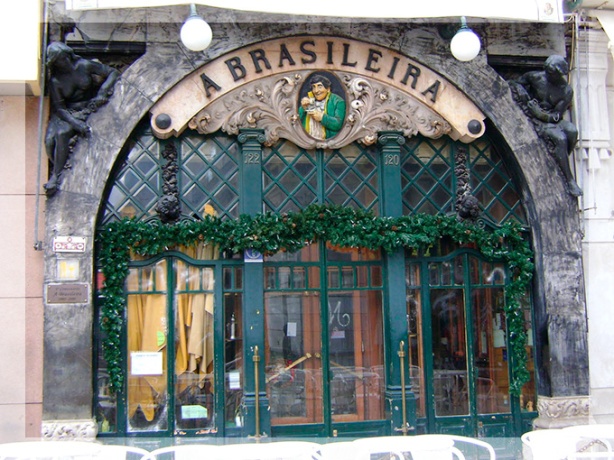
Café’s interior

Almada’s Maternity painting
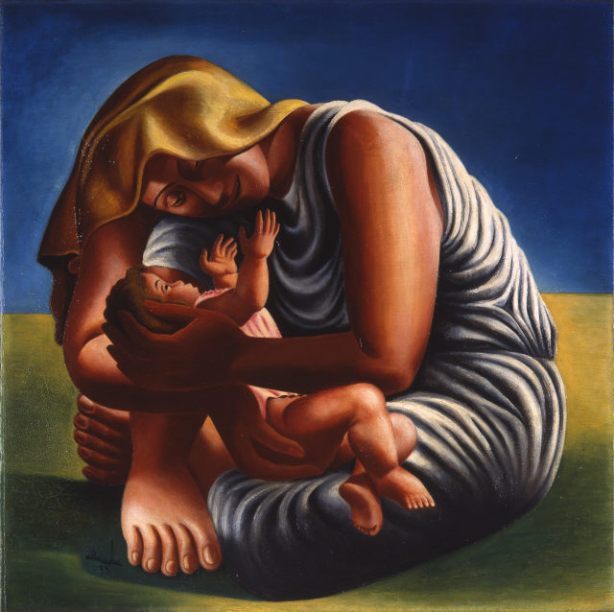
Almada’s Fernando Pessoa portrait

His self-portrait graphite drawing and painted self-portrait


Almada nude

Articles on Almada Negreiros:
https://repositorio-aberto.up.pt/bitstream/10216/84900/2/76351.pdf
https://pt.wikipedia.org/wiki/Almada_Negreiros
13 March 2017
The works that are selected for this course belong to MoMA and the choice of the works is determined by this fact.
I would include in my selection of paintings related to Identity Lucien Freud’s self portraits which I find very expressive and with a strong impact on the viewer – https://youtu.be/qtkMTG-_674
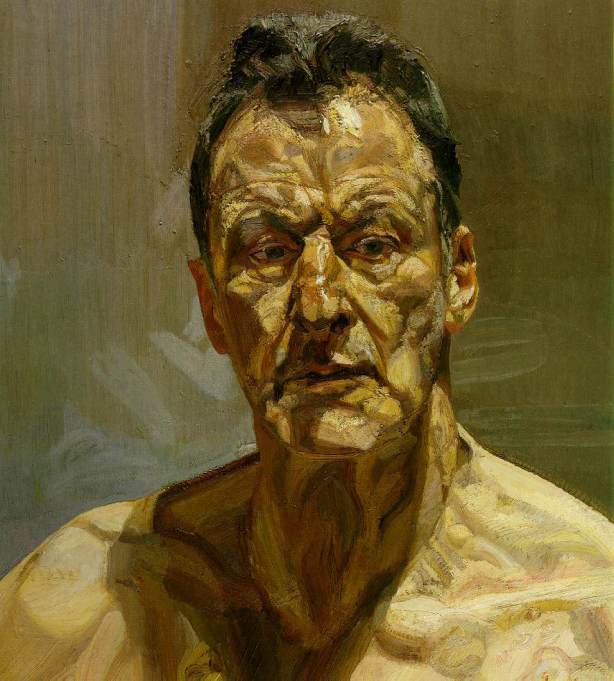
MoMA publications: books
Carolyn Lancher. Andy Warhol, The Museum of Modern Art, 2008, 2-14.Carolyn Lanchner, Henri Matisse, The Museum of Modern Art, 2008.
Anne Umland, Picasso: One on One: Girl before a Mirror, The Museum of Modern Art, 2012.
MoMA publications: articles and online resources
★ MoMA Learning: Investigating Identity
MoMA Learning: Photography and the Public Image
Teaching Tips: Frida Kahlo, Self-Portrait with Cropped Hair
Teaching Tips: Pablo Picasso, Girl Before a Mirror
Additional reading: books
Richard Meyer. “Borrowed Voices: Glenn Ligon and the Force of Language,” Queer Culture.
Additional reading: articles and online resources
★ George Hein. “John Dewey and Museum Education.” Curator: The Museum Journal, 47 [4] 413-427, 2004.
Glenn Ligon audio interivew, Runaways, Whitney Museum of Art
More about the artists
Ellen Gallagher on MoMA.org and Art21
Glenn Ligon on MoMA.org and Art21
Bruce Nauman on MoMA.org and Art21
12 March 2017
Addressing Theme Art&Identity
Some self-portraits and other identity pictures by Frida Khalo, Marc Chagall, Andy Wharhol’s Marilyn, Picasso, Marie Thérese, Henri Matisse’s Studio, Rineka Dijkstra Almerisa portraits.
I would make a few more choices than the ones in the course. I thinks Frida Kahlo is a good choice, because most of her Works were self portraits and my preferred one is Broken Column. Here is my visual on three of her portraits:

The portrait where she is wearing a man’s suit is a statement after her divorce of Rivera , in which she strips herself from her female attributes, such as her long hair that her husband praised and her female body shape is disguised in a large men’s suit. Her double self-portrait shows a bleeding heart.
«Symbolic elements frequently possess multiple layers of meaning in Kahlo’s pictures; the recurrent theme of blood represents both metaphysical and physical suffering, gesturing also to the artist’s ambivalent attitude toward accepted notions of womanhood and fertility.» (http://www.theartstory.org/artist-kahlo-frida-artworks.htm#pnt_5 )
I’m not a great enthusiast of Pop-Art and Warhol’s iconic compositions on Marylin Monroe, so I’ll just add this link for KhanAcademy review on the painting – https://www.khanacademy.org/humanities/art-1010/pop/v/warhol-gold-marilyn-monroe-1962
Pablo Picasso’s Girl before a Mirror is a great painting, dated 1932, the canvas is divided in two halves, the real girl and her reflection on an oval mirror, the real girl seems happy, painted with bright colours but her reflection is dark and gloomy. The background is a colourful patrern design that resembles mosaic.
«When you look closely at the image, you can interpret many different symbols within different parts of the painting. The woman’s face for one; is painted with a side profile and a full frontal image. One side shows the day time where she seems more like a woman, dolled up with her make up done. The other side with the rough charcoal texture portrays her at night. When she takes off the mask of makeup, and is more vulnerable as a young lady. One way of interpreting the painting is when the woman looks at herself in the mirror; she is seeing herself as an old woman. From the green discoloration on her forehead, darkening of her facial features to the lines that show that her young body has been distorted, and gravity has taken its rightful place. Another way of viewing the painting is that she is self-conscious, and she sees all the flaws in herself that the world doesn’t see.» (http://www.pablopicasso.org/girl-before-mirror.jsp)

Video analysis –
https://pt.khanacademy.org/partner-content/moma/moma-learning/v/teaching-picasso
http://study.com/academy/lesson/picassos-girl-before-a-mirror-meaning-analysis.html
Marc Chagall’s I and the village is a nostalgic painting about his russian birthplace. It’s a modern painting of 1911 that blends the cubist geometric shapes with the figurative and narrative. Two big profiles in front of each other highlight in the canvas, a man and a goat, evoking a dreamlike scene- http://www.chagallpaintings.org/iandthevillage.html

Henri Matisse paints his studio in deep red, in 1911. Fauvism is characterized by strong colours. In spite of the red the painting conveys a quiet and contemplative space where paintings and furniture seem orderly disposed.

11 March 2017
Course readings on Theme Places&Spaces:
MoMA publications: books
Charles Burchfield, Edward Hopper, 1933 and James Thrall Soby, Contemporary Painters, 1948. Excerpted in John Elderfield, (ed.), Modern Painting and Sculpture: 1880-The Present. The Museum of Modern Art, 2004, 215-216. Purchase the full publication at MoMAstore.org.
Richard Thomson. Vincent van Gogh: The Starry Night. The Museum of Modern Art, 2008. Purchase the full publication at MoMAstore.org.
Piet Mondrian, The Museum of Modern Art Bulletin, 1946. Excerpted in John Elderfield, (ed.), Modern Painting and Sculpture: 1880-The Present. The Museum of Modern Art, 2004, 207-208. Purchase the full publication at MoMAstore.org.
★ Jodi Hauptman, “Piet Mondrian” in Picasso to Warhol: Fourteen Modern Masters, 2011, 58-63.
★ Laura Hoptman, One on One: Wyeth, Christina’s World, The Museum of Modern Art, 2012.
Ann Temkin and Nora Lawrence. Claude Monet: Water Lilies. The Museum of Modern Art, 2009. Purchase the full publication at MoMAstore.org.
★ Ann Temkin and Claire Lehmann. “The Bechers,” in Ileana Sonnabend: Ambassador for the New. The Museum of Modern Art. 2013, 108-111. Purchase the full publication at MoMAstore.org.
MoMA publications: articles and online resources
Louis Kahn Educator Guide: Spirituality of Matter
★ MoMA Learning: Landscapes, Real and Imagined
MoMA Learning: Outside the Museum
MoMA Learning: Maps, Borders and Networks
MoMA Learning: Surrealist Landscapes, Real and Imagined
MoMA Learning: Rise of the Modern City
History of Claude Monet, Water Lilies audio
MoMA Audio: Kids: Vincent van Gogh, The Starry Night
MoMA Audio: Kids: Andrew Wyeth, Christina’s World
MoMA Audio: Kids: Piet Mondrian, Broadway Boogie Woogie
MoMA Audio: Visual Descriptions: Claude Monet, Water Lilies
MoMA Audio: Visual Descriptions: Henri Matisse, Red Studio
MoMA Audio: Visual Descriptions: Salvador Dali, The Persistence of Memory
MoMA Audio: Visual Descriptions: Piet Mondrian, Broadway Boogie Woogie
MoMA Kids Art Card: Piet Mondrian, Broadway Boogie Woogie
MoMA Kids Art Card: Andrew Wyeth, Christina’s World
Alex Roediger, “A Van Gogh Pilgrimage on the 125th Anniversary of His Death.” Inside/Out.
Additional reading: articles and online resources
Salvador Dali, The Persistence of Memory, Khan Academy
Nathaniel Kahn, “Scenes from My Architect,” TED Talk, February 2002.
Gordon Matta-Clark, “Splitting, Bingo/Ninths, Substrait (Underground Dailies),” UbuWeb.
Ned Smyth, “Gordon Matta-Clark,” Ned Smyth, Artnet, 2004.
John Walsh, “Rachel Whiteread: ‘I’ve done the same thing over and over,'” Independent
Rachel Whiteread, Water Tower, Public Art Fund
More about the artists
Gordon Matta-Clark on MoMA.org
Hippolyte Blancard on MoMA.org
Bernd and Hilla Becher on MoMA.org
10 March 2017
Edward Hopper’s House by the Railroad

Source:
http://www.edwardhopper.net/house-by-the-railroad.jsp
http://www.theartstory.org/artist-hopper-edward-artworks.htm#pnt_1
From Painting to Poem – https://edsitement.neh.gov/node/17743
Edward Hirsh poem on the painting expresses much of the mood of the painting
http://english.emory.edu/classes/paintings&poems/house.html
Out here in the exact middle of the day,
This strange, gawky house has the expression
Of someone being stared at, someone holding
His breath underwater, hushed and expectant;
This house is ashamed of itself, ashamed
Of its fantastic mansard rooftop
And its pseudo-Gothic porch, ashamed
of its shoulders and large, awkward hands.
But the man behind the easel is relentless.
He is as brutal as sunlight, and believes
The house must have done something horrible
To the people who once lived here
Because now it is so desperately empty,
It must have done something to the sky
Because the sky, too, is utterly vacant
And devoid of meaning. There are no
Trees or shrubs anywhere–the house
Must have done something against the earth.
All that is present is a single pair of tracks
Straightening into the distance. No trains pass.
Now the stranger returns to this place daily
Until the house begins to suspect
That the man, too, is desolate, desolate
And even ashamed. Soon the house starts
To stare frankly at the man. And somehow
The empty white canvas slowly takes on
The expression of someone who is unnerved,
Someone holding his breath underwater.
And then one day the man simply disappears.
He is a last afternoon shadow moving
Across the tracks, making its way
Through the vast, darkening fields.
This man will paint other abandoned mansions,
And faded cafeteria windows, and poorly lettered
Storefronts on the edges of small towns.
Always they will have this same expression,
The utterly naked look of someone
Being stared at, someone American and gawky.
Someone who is about to be left alone
Again, and can no longer stand it.
Claude Monet’s Water Lilies.
Impressive mural panels, lovely soft peaceful scenery of a pond with lilies that blur light and shade, a precursor of abstract art.
(Somehow, it reminds the later paintings of Turner that reach this abstract feature.)
My visual notes
Source:
http://www.claude-monet.com/waterlilies.jsphttps://en.wikipedia.org/wiki/Water_Lilies_(Monet_series)
http://www.theartstory.org/artist-monet-claude.htmhttp://www.artic.edu/aic/resources/resour9ce/37
http://theopenacademy.com/content/lecture-43-monet-les-nympheas-water-lilies-1918-1926
9 March 2017
Surrealism started as a literary movement, coined by André Breton – http://poetsofmodernity.xyz/POMBR/French/Manifesto.htm – and extended to Painting and Film, with Buñuel.
André Breton defined Surrealism as “psychic automatism in its pure state, by which one proposes to express – verbally, by means of the written word, or in any other manner – the actual functioning of thought.” What Breton is proposing is that artists bypass reason and rationality by accessing their unconscious mind. In practice, these techniques became known as automatism or automatic writing, which allowed artists to forgo conscious thought and embrace chance when creating art. » (http://www.theartstory.org/movement-surrealism.htm )
Surrealism was much influenced by Freud’s psychoanalysis and the power of Dream
Dali’s painting The Persistence of Memory – https://en.wikipedia.org/wiki/The_Persistence_of_Memory
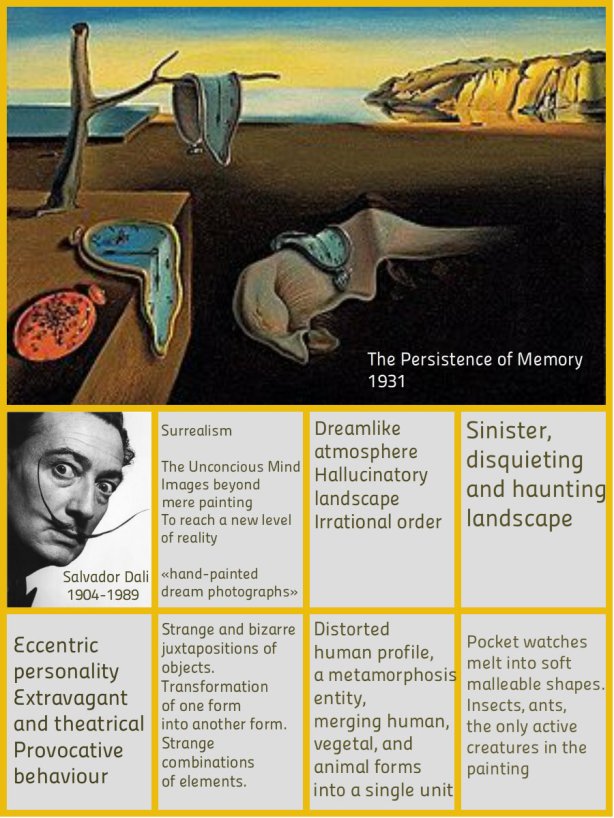
Andrew Wyeth, a realist painter

(correction: Wyeth died in 2009)
Source:
https://en.wikipedia.org/wiki/Andrew_Wyeth
Louis Kahn, the architect of Bangladesh Parliament

8 March 2017
The first theme on Places&Spaces adresses 3 works of three different artists: van Gogh’s Starry Night – Mondrian’s Broadway Boogie Woogie – Matta-Clark’s Bingo
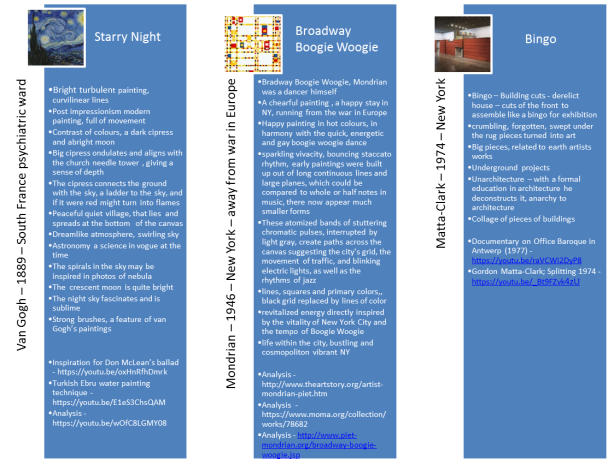
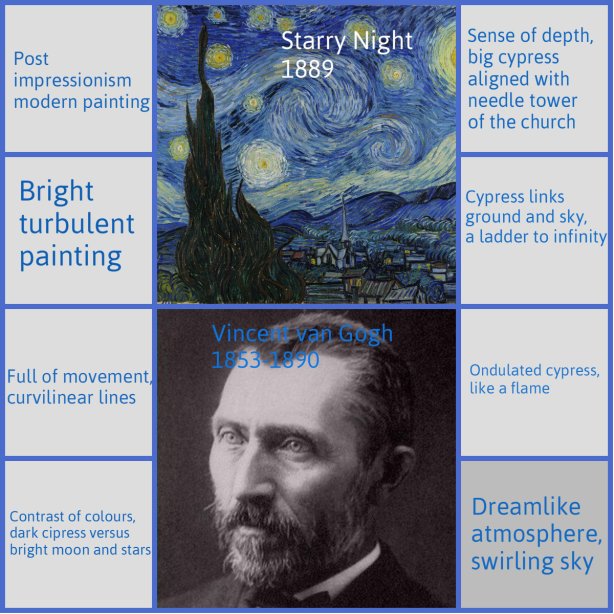

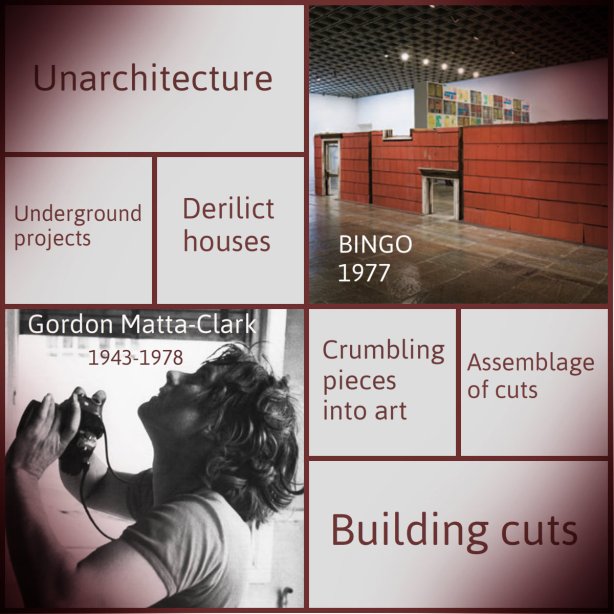
7 March 2017
The Resources of the course have a comprehensive repository of links and videos on Modern/Contemporary Art, which is worth navigating https://www.moma.org/learn/moma_learning/tools_tips
Newman’s Broken Obelisk
I just came across Newman’s Broken Obelisk and in my search I found this artcle in the Guardian about the work, which was a revelation to me – https://www.theguardian.com/artanddesign/jonathanjonesblog/2008/oct/22/barnett-newman-obelisk
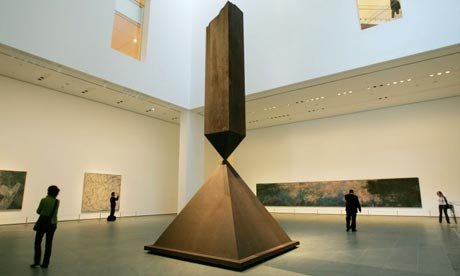
Resources of the course:
What is Modern Art? – https://www.moma.org/learn/moma_learning/themes/what-is-modern-art
Art Glossary – https://www.moma.org/learn/moma_learning/glossary
Tools&Tips (repository of links and videos to art) – https://www.moma.org/learn/moma_learning/tools_tips
Everyone’s a critic – http://moma.org/momaorg/shared/pdfs/docs/learn/moma_everyones-a-critic.pdf
Theme Machine – http://www.moma.org/momaorg/shared/pdfs/docs/learn/courses/Theme_Machine.pdf
Art Vocabulary – http://www.moma.org/momaorg/shared/pdfs/docs/learn/courses/Vocabulary_for_Discussing_Art.pdf

6 March 2017
The course started on 6 March 2017, in Coursera, and is promoted by MoMA.
«This course is designed to help build critical skills that support theme-based teaching practices and build confidence in incorporating modern and contemporary art into interdisciplinary lesson plans.
By addressing themes and questions that arise in relation to modern and contemporary art, the course will help you to think creatively about links to your curriculum and the ways that you can tap into students’ knowledge and life experience.
In this course, you will explore four themes that educators at The Museum of Modern Art use frequently in their teaching: Places & Spaces, Art & Identity, Transforming Everyday Objects, and Art & Society. Through videos, slideshows, and a variety of resources, readings, and activities, you will explore the content and context of works of art in MoMA’s collection.
Learners will…
– Explore works of modern and contemporary art through a variety of themes that relate to classroom content and student experience.
– Hear directly from artists about their ideas and processes.
– Learn about the ways that a thematic approach supports interdisciplinary teaching and learning.
– Gain exposure to a range of digital resources available for teaching with themes and incorporating content around works of art into your classroom.»
